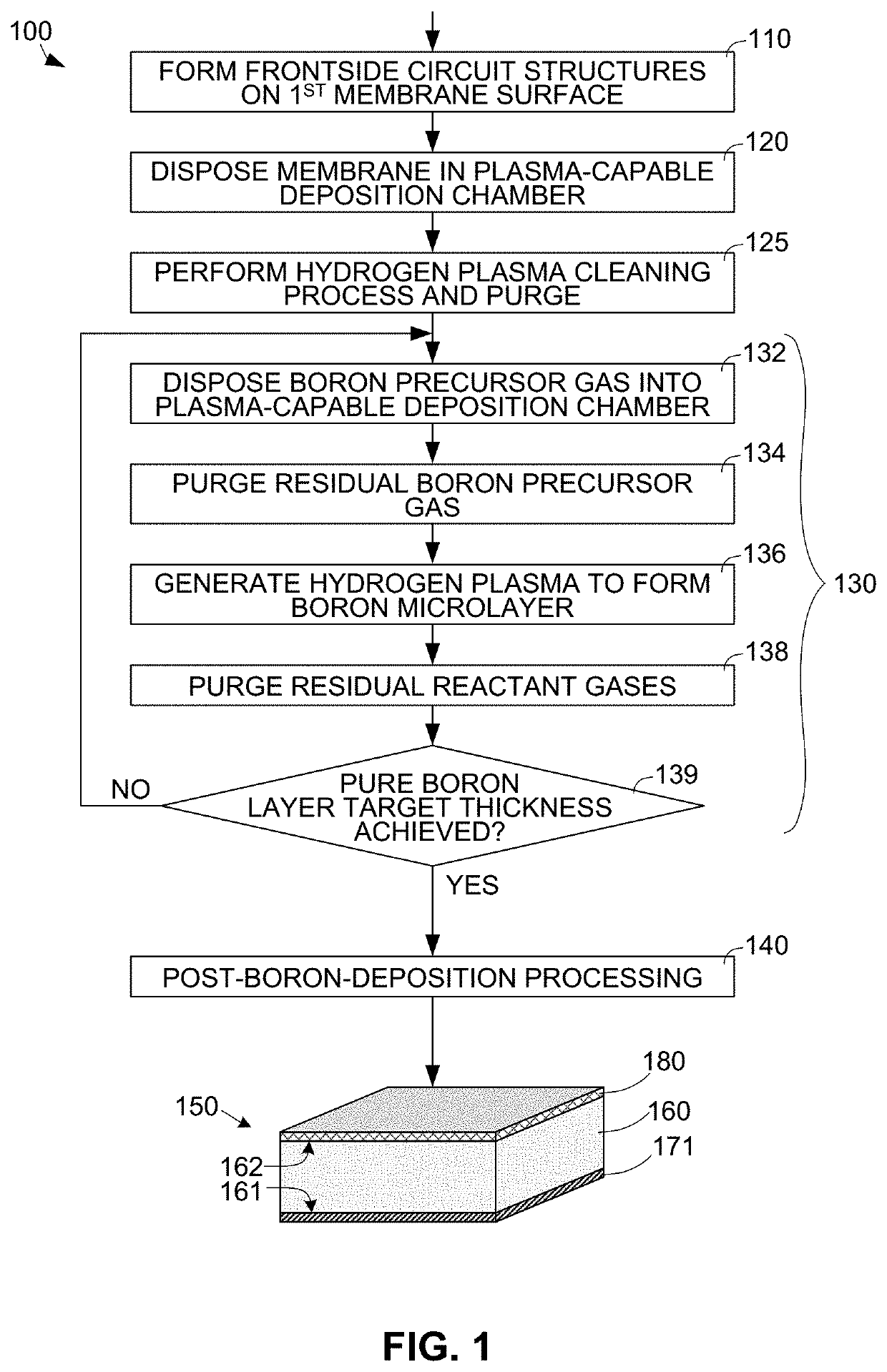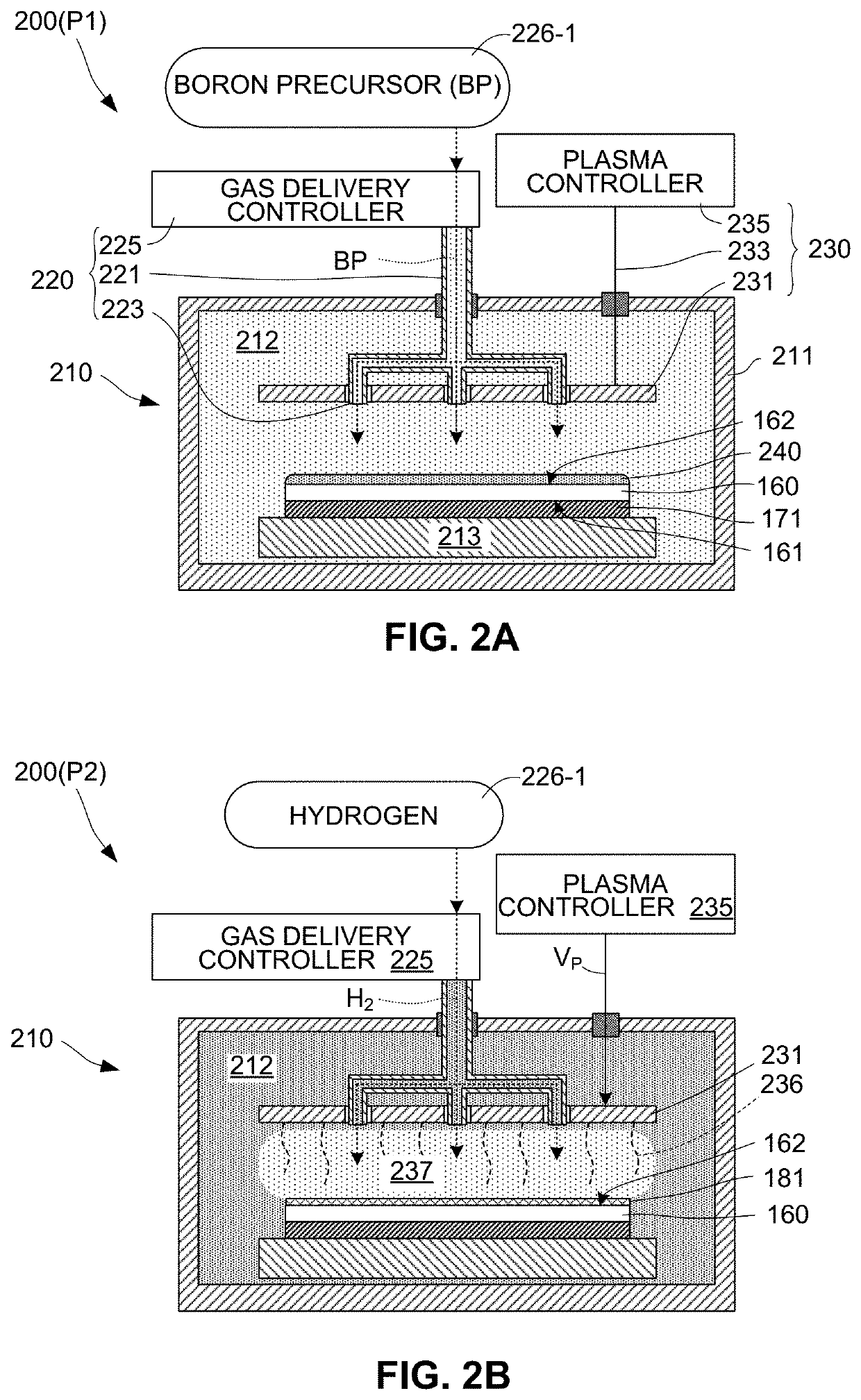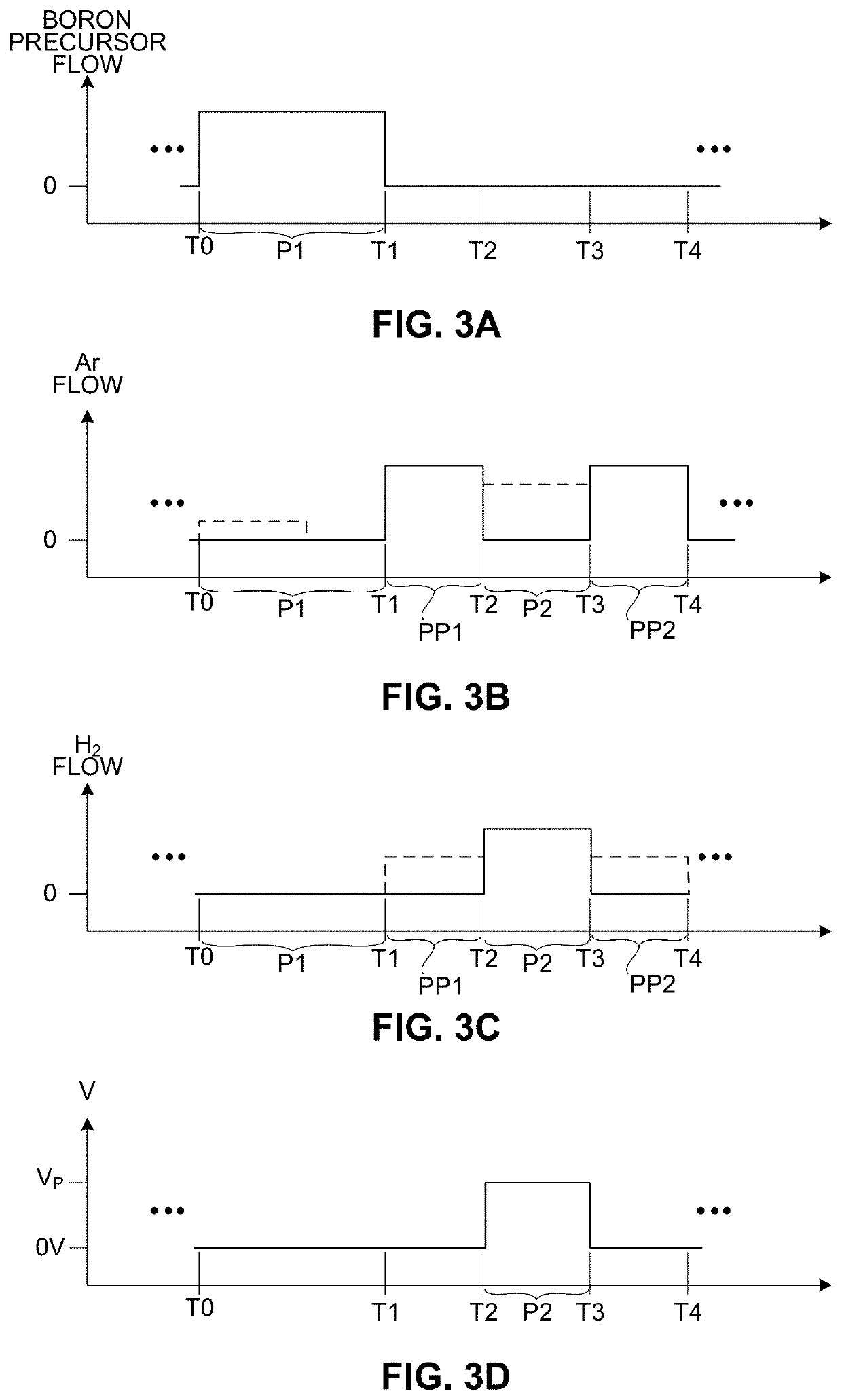Back-illuminated sensor with boron layer deposited using plasma atomic layer deposition
- Summary
- Abstract
- Description
- Claims
- Application Information
AI Technical Summary
Benefits of technology
Problems solved by technology
Method used
Image
Examples
Example
DETAILED DESCRIPTION OF THE DRAWINGS
[0033]FIG. 1 is a flow diagram depicting a method 100 for producing an image sensor 150 that is configured to sense DUV / VUV / EUV radiation or charged particles using a plasma ALD boron layer formation process according to a generalized embodiment of the present invention. Image sensor 150 is partially depicted in a simplified form at the bottom of FIG. 1 for reference. Additional details related to method 100 and image sensor 150 are described below with reference to FIGS. 2A through 4B.
[0034]Referring to block 110 at the top of FIG. 1 and to image sensor 150 at the bottom of FIG. 1, front-end circuit structures 171 are generated on the frontside surface 161 of a semiconductor membrane 160 using well-known integrated circuit (IC) fabrication processes such as lithography, deposition, ion implantation, annealing and etching. As known in the art, these well-known IC fabrication processes typically include front-end processes during which non-metal st...
PUM
 Login to View More
Login to View More Abstract
Description
Claims
Application Information
 Login to View More
Login to View More - R&D
- Intellectual Property
- Life Sciences
- Materials
- Tech Scout
- Unparalleled Data Quality
- Higher Quality Content
- 60% Fewer Hallucinations
Browse by: Latest US Patents, China's latest patents, Technical Efficacy Thesaurus, Application Domain, Technology Topic, Popular Technical Reports.
© 2025 PatSnap. All rights reserved.Legal|Privacy policy|Modern Slavery Act Transparency Statement|Sitemap|About US| Contact US: help@patsnap.com



